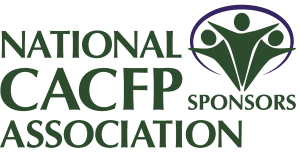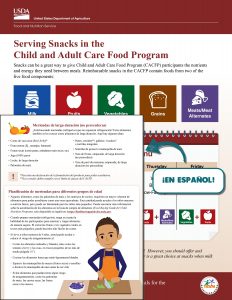CACFP Resource: Serving Snacks
October 28, 2022

Serving snacks in the Child and Adult Care Food Program
Snacks can be a great way to give Child and Adult Care Food Program (CACFP) participants the nutrients and energy they need between meals. Reimbursable snacks in the CACFP contain foods from two of the five food components: fruits, vegetables, grains, milk, and meats/meat alternates. Examples might include a blueberry smoothie comprised of fruit and milk, or a parfait of berries with low-fat yogurt and a glass of water.
Note: Water is not considered a food component in the CACFP. However, you should offer and make water available to participants throughout the day. Water is a great choice at snacks when milk is not offered.
Planning Snacks for Different Age Groups
- Some foods, like popcorn and surimi seafood, require a larger amount of food to credit toward a food component. This amount may help older children feel full, but may be too much for younger children.
- Consider participants’ ability to chew and swallow foods safely when preparing snacks. Cutting raw fruits and vegetables into pieces can make them easier to eat.
- If serving children 4 years and younger, you can help reduce the risk of choking by:
- Cutting round, soft foods, like cherry tomatoes and grapes, into small pieces no larger than one-half inch (½”).
- Cooking food until it is slightly soft.
- Spreading nut or seed butters thinly, or thinning nut butters before serving.
- Avoiding foods that may pose a choking risk, such as popcorn, dried meats, dried fruit, and nuts.
For more detailed information about preparing and serving snacks, check out this comprehensive resource from the USDA!

